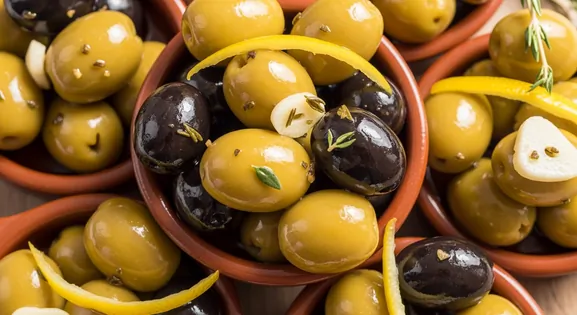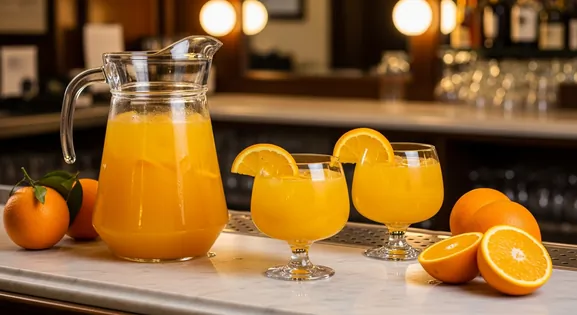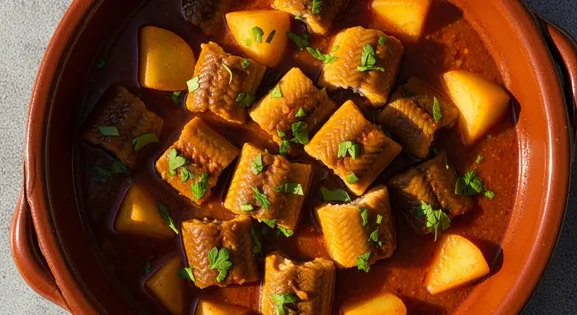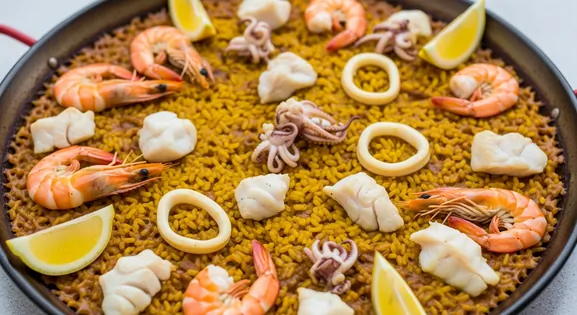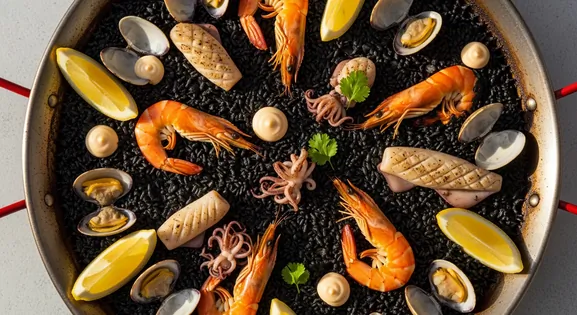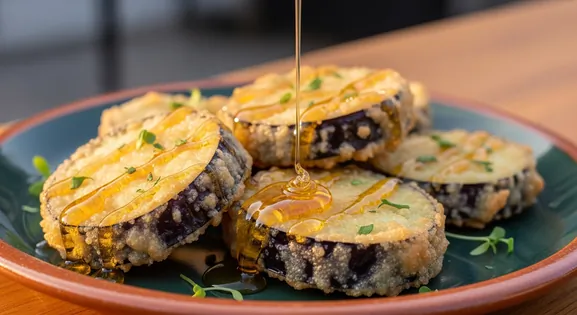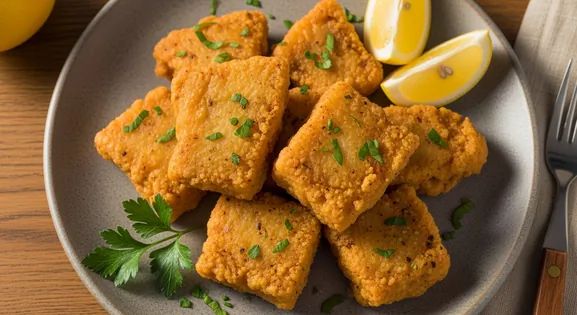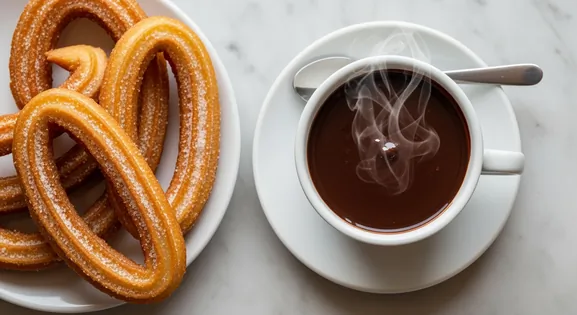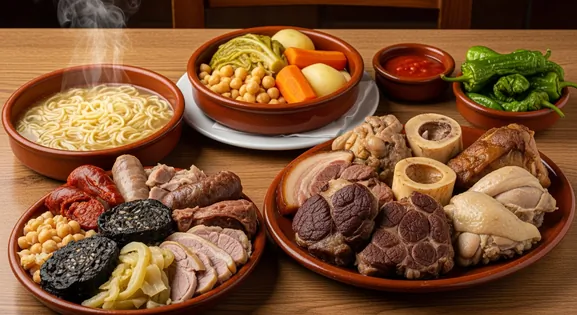Callos in Spain: A Complete Food Lover's Guide
Callos a la Madrileña
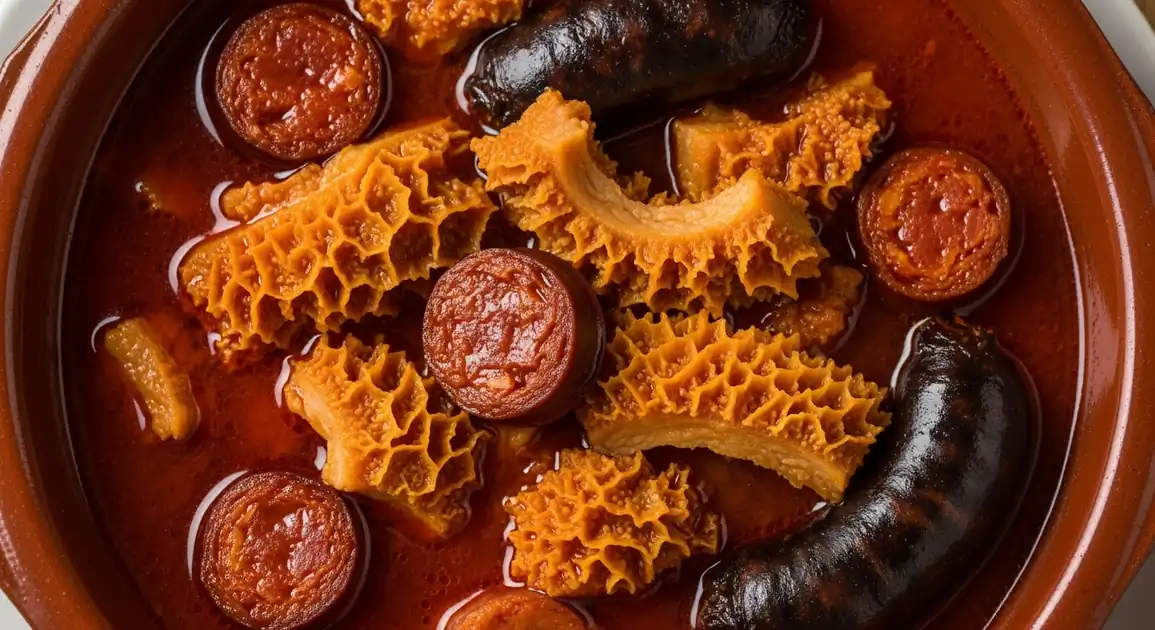
Understanding This Dish: An Introduction
Callos is a classic, hearty tripe stew enjoyed across Spain, though most famously associated with Madrid. Renowned for its rich, paprika-infused broth and tender, slow-cooked beef tripe, often accompanied by chorizo and morcilla (blood sausage), it's a staple of traditional Spanish cuisine. Often served bubbling hot in an earthenware 'cazuela', it's a deeply savory dish, perfect for dipping bread into.
History and Origins
The origins of Callos are debated, but it's considered a humble dish that gained popularity in Spanish taverns ('tascas') centuries ago, particularly in the capital. It became a signature dish of the region's gastronomy, representing a tradition of utilizing all parts of the animal and slow-cooking techniques. Recipes have been passed down through generations, with renowned establishments serving it since the 19th century, solidifying its place in culinary heritage.
Deconstructing Callos (Spanish Tripe Stew): Ingredients and Method
Preparing Callos is labor-intensive. The beef tripe must be meticulously cleaned and then typically blanched. It's then slow-cooked for several hours (often 3-4 hours or more) with aromatics like bay leaf until very tender. Chorizo, morcilla, paprika, garlic, and other seasonings are added, simmering together to create the distinctive thick, flavorful red broth. Sometimes chickpeas are added partway through cooking.
Key Ingredients of Callos (Spanish Tripe Stew)
Beef Tripe (Callos)
Typically honeycomb tripe, this is the star of the dish. It requires meticulous cleaning and long, slow cooking to become tender and absorb the rich flavors of the stew.
Quality indicator: Look for tripe that is clean, has a fresh, neutral smell, and is cooked until it's soft and yielding, not rubbery.
Chorizo
A Spanish cured sausage, usually made from pork, seasoned with paprika, which gives the stew its characteristic smoky flavor and reddish hue.
Quality indicator: Choose a good quality, semi-cured chorizo that releases its paprika-infused oils into the stew, contributing depth and color.
Morcilla (Blood Sausage)
A Spanish blood sausage, often containing rice or onion, that enriches the stew with its unique savory, slightly earthy flavor and helps thicken the broth.
Quality indicator: A quality morcilla will melt slightly into the stew, adding a creamy texture and deep, complex notes without being crumbly or overly fatty.
Local Callos (Spanish Tripe Stew) Variations in Spain
Callos a la Andaluza
Andalusian style often includes chickpeas and sometimes omits morcilla, potentially using different spices.
Callos a la Gallega
Galician style typically includes chickpeas and might use local pork products.
Callos con Garbanzos
A common variation across Spain, explicitly mentioning the inclusion of chickpeas, which is very typical in the Madrileña style too.
Perfect Partners: What to Pair
Crusty Bread
Food
Essential for soaking up the rich, flavorful broth of the Callos. A good crusty baguette or rustic country bread provides the perfect textural contrast and ensures no drop of the delicious sauce goes to waste.
Spanish Red Wine (e.g., Rioja, Ribera del Duero)
Drink
A robust, medium-bodied Spanish red wine complements the richness and savory depth of Callos beautifully, cutting through the fat and enhancing the paprika notes.
A Traveler's Guide to Authenticity
What to Look For
-
Served piping hot
Callos should be served very hot, often bubbling slightly in its dish. This indicates it has been recently cooked or properly reheated to optimal serving conditions.
-
Reputable, clean establishment
Choose traditional restaurants or bars known for good quality, classic Spanish food. Cleanliness is a good indicator of overall hygiene standards.
-
Clear, rich broth (not excessively greasy or murky)
While rich, the broth should not be swimming in separated grease or appear unusually cloudy, indicating quality ingredients and preparation.
-
Tender tripe
Properly cooked callos should have tender, yielding tripe, not tough or rubbery, indicating sufficient cooking time.
What to avoid
-
Lukewarm Callos
Avoid Callos that is served warm or lukewarm, as this indicates it has not been held at optimal serving temperatures.
-
Establishments with poor hygiene
Avoid places that appear generally unclean or poorly maintained.
-
Unusually cheap Callos
While traditionally affordable, extremely low prices might indicate compromised ingredient quality or preparation standards, although market bars can be exceptions.
-
Off-smelling dish
Trust your senses. If the dish has an unpleasant or sour smell, do not eat it.
Explore Callos (Spanish Tripe Stew) in Detail: City Guides
Discover where to find the best Callos (Spanish Tripe Stew) and learn local tips in these cities:
Dietary Information
Dietary Information
Important Note for Travelers: Your safety is our priority. Below are the common allergens associated with the traditional preparation of this dish. However, recipes and ingredients can vary significantly between establishments. Always confirm all ingredients directly with the food vendor before ordering, especially if you have a severe allergy.
Potential Allergens
Dietary Suitability
How to Order Callos (Spanish Tripe Stew)
Frequently Asked Questions about Callos (Spanish Tripe Stew)
What exactly is Callos?
Callos is a traditional Spanish stew, most famously associated with Madrid, but enjoyed across the country. Its main ingredients are slow-cooked beef tripe, chorizo (paprika sausage), and morcilla (blood sausage). It features a rich, savory broth flavored with paprika, garlic, and sometimes chili for a slight kick. Often, chickpeas ('garbanzos') are also included.
What does Callos taste like?
Callos has a deeply savory and rich flavor profile dominated by the smoky paprika from the chorizo and the richness of the morcilla. The tripe itself has a mild flavor but absorbs the stew's seasonings and offers a unique, tender, slightly gelatinous texture after slow cooking. It's hearty and warming, with a subtle spiciness depending on the recipe.
How can I ensure quality when eating Callos?
When prepared correctly in a reputable establishment, Callos can be a delightful experience. Key quality factors are the thorough cleaning and very long, slow cooking of the tripe, which tenderizes it. Always choose established restaurants or bars known for good traditional food. Ensure it's served piping hot.
What are the main ingredients in Callos?
The core ingredients are beef tripe (usually honeycomb tripe), chorizo, morcilla (Spanish blood sausage), paprika, garlic, and often onions and bay leaf. Some recipes include chickpeas or a touch of chili pepper ('guindilla'). The broth is typically thickened naturally by gelatin from the tripe and ingredients during the long cooking process.
Is Callos gluten-free?
Often, Callos is NOT gluten-free. While the base ingredients are naturally gluten-free, Spanish morcilla frequently contains breadcrumbs, flour, or rice as a binder. Additionally, some recipes might use flour to thicken the sauce, though less traditional. Always confirm with the restaurant if you require strict gluten-free food. Cross-contamination is also possible.
Is Callos vegetarian or vegan?
No, Callos is fundamentally a meat-based dish containing beef tripe, pork chorizo, and pork blood sausage (morcilla). There are no common vegetarian or vegan variations.
Expert How-To Guides about Callos (Spanish Tripe Stew)
How to Identify a Good Place for Callos
Tips for choosing a restaurant or bar likely to serve high-quality, authentic Callos.
- Look for traditional Spanish 'tascas' or 'restaurantes', especially those advertising 'cocina casera' (home cooking).
- Check the menu: See if Callos is listed as a specialty or regularly available dish, not just an afterthought.
- Observe other diners: Are locals eating it? A good sign.
- Ask for recommendations: Hotel concierges or local acquaintances can often point to reliable spots.
- Read reviews specifically mentioning Callos (e.g., on local guides or food blogs).
- Ensure the establishment looks clean and well-maintained.
How to Eat Callos Like a Local
Discover the authentic way to enjoy Callos, from ordering the right portion to pairing it with traditional Spanish beverages, ensuring a truly local culinary experience.
- Order as a 'tapa' (small plate) to try, a 'media ración' (half portion), or a full 'ración' (portion) to share or as a main course.
- Use bread ('pan')! It's essential for soaking up the delicious, rich broth. Ask for bread if it's not automatically served.
- Pair it with a robust Spanish red wine (like Rioja or Ribera del Duero) or a cold 'caña' (small draft beer).
- Eat it while it's hot. Callos is best enjoyed piping hot directly from the kitchen.
- Share with friends! A 'ración' is often perfect for sharing amongst 2-3 people as part of a larger meal or tapas selection.
Our Commitment to Quality
At Tasteplorers, our mission is to provide the most accurate and useful travel information in the world. To achieve this, all content on this site is created through our unique editorial framework. We utilize leading AI research tools, guided by our proprietary prompts, and a multi-stage validation process. This entire system is overseen by our editorial team to ensure everything we publish meets our high standards for accuracy, cultural nuance, and practical value for travelers.
Learn more about our Editorial Process and our Mission.
Countries
Explore regions
Europe
Discover Europe's diverse culinary landscape, from Mediterranean flavors to hearty Alpine fare. Learn to navigate markets, decode menus, and eat like a local.
Latin America & Caribbean
Discover the vibrant cuisines of Latin America & the Caribbean. Our expert guide covers everything from Mexican street food to Peruvian ceviche and market tips.
Oceania
Explore Oceania's diverse food scene. Learn about Polynesian earth ovens, Fijian feasts, and the vibrant café culture of Australia and New Zealand.
Southeast Asia
Explore Southeast Asia's diverse food cultures from Thailand to Vietnam. Get expert tips on navigating spice levels, choosing quality vendors, and understanding the rich traditions of the region.
